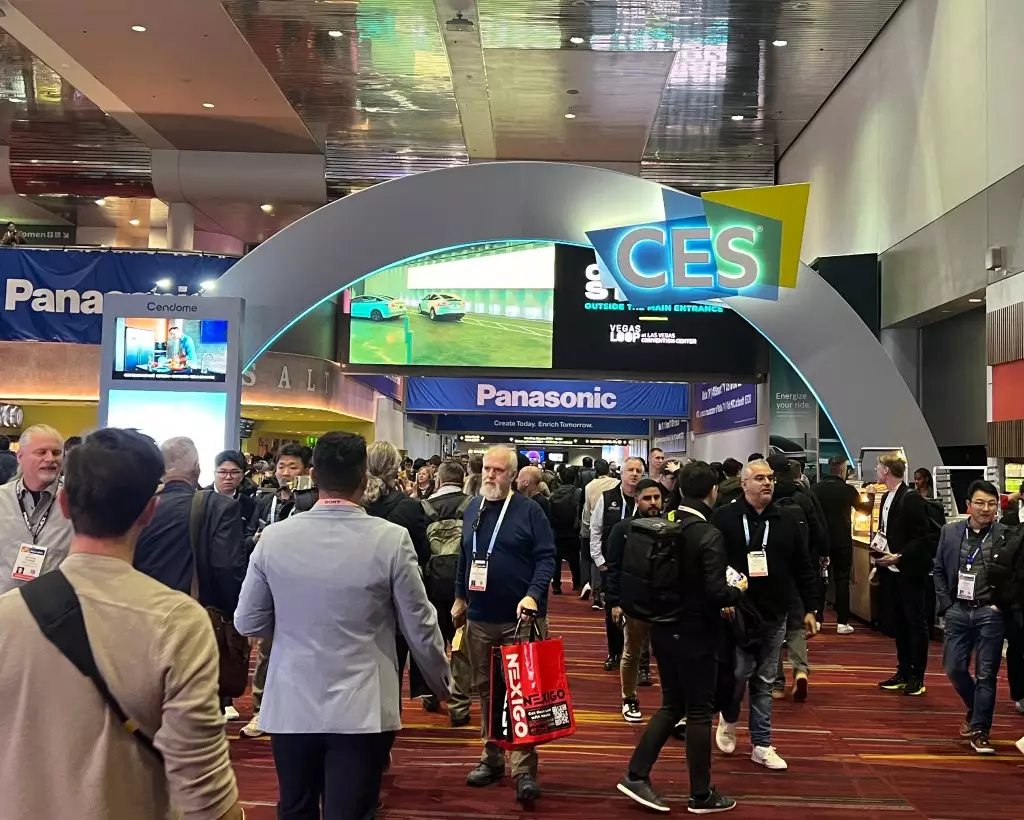The Consumer Electronics Show (CES) in Las Vegas is undeniably more than just a platform for unveiling cutting-edge gadgets. It has evolved into a crucial nexus for entertainment and technology, reflecting the ongoing transformation of media consumption. This year’s edition, underway amidst a backdrop of pronounced challenges for traditional media, reveals the urgency with which these companies are seeking to recalibrate their strategies in relation to the tech giants. As box office revenues and linear television viewership continue their decline, and layoffs persist in shaping the industry landscape, tech companies provide a glimmer of optimism. Yet, this optimism is interwoven with complexities unique to the intersection of technology and entertainment.
Familiar faces from both sides of the aisle are making their presence known. Major tech players like Sony and Panasonic have set up expansive booths, while venerable media corporations like Disney and Warner Bros. Discovery also feature prominently. This cross-industry engagement emphasizes the necessity for traditional media firms to align their efforts with technological advancements. Events like the Audience Summit hosted by OpenAP, showcase key discussions surrounding the very real challenges and opportunities that streaming services present.
Prominent figures such as Jeffrey Katzenberg, who famously attempted to launch the short-lived streaming service Quibi at CES a few years back, are leveraging this platform to address current industry dynamics. The scale of participation exemplifies a shift where entertainment and technology must partner rather than compete, navigating complex waters filled with both opportunity and risk.
Advertising’s Evolution and Strategic Opportunities
Advertising plays a pivotal role at CES, serving as a cornerstone for discussions around revenue generation as dollars increasingly migrate from traditional media to digital and streaming platforms. Mark Marshall, head of advertising and sponsorships at NBCUniversal, aptly describes CES as a precursor to the “upfronts,” emphasizing its importance in securing advertising commitments and fostering industry engagement ahead of major events and milestones. As NBCU approaches its centenary in 2026, strategic planning surrounding high-profile events like the Super Bowl and the FIFA World Cup reflects a broader trend of interlinking advertising with engaging consumer experiences.
Disney, similarly, highlights its substantial investments in technology to maintain competitiveness amidst advancing platforms. Rita Ferro, President of Global Advertising at Disney, stresses that despite existing challenges, the scale of Disney’s content, particularly in sports, positions the company favorably in the advertising landscape. Such statements echo a unified realization among legacy media corporations that their narratives must now intertwine with audience-driven technologies.
The ascendance of streaming services has sparked innovation not just in content delivery, but also in marketing strategies and consumer engagement. Warner Bros. Discovery, for example, is aggressively pursuing brand integrations on its streaming platform Max, aiming to create an immersive, engaging experience for viewers. Events like the “Taste of Thailand” party at CES, spotlighting the upcoming season of HBO’s *White Lotus*, showcase a creative approach to promote content through culinary experiences, effectively binding the emotive and commercial facets of media.
There is a tangible buzz among analysts who monitor the evolving landscape. Tim Nollen from Macquarie emphasized a study that indicates noteworthy improvements in the advertising ecosystem. This shift illustrates an industry adapting to rapidly changing consumer habits—an essential skill for survival amidst fierce competition from tech-savvy newcomers.
The Role of Labor Organizations in the Tech Dialogue
Amid these developments, labor organizations like SAG-AFTRA are at CES to advocate for key issues affecting creative professionals, including the implications of artificial intelligence in content creation. As various factions of the entertainment labor force unite to address these rapidly changing dynamics, dialogues spearheaded by leaders such as Duncan Crabtree become paramount. The interaction of labor and technology will likely shape policies for the foreseeable future, reaffirming the interconnected nature of these arenas.
CES 2023 serves as more than just a showcase for new devices; it symbolizes a watershed moment for an industry grappling with its identity in an era defined by technological advancement and evolving consumer preferences. The collective participation of media and technology giants highlights a collaborative spirit, suggesting that the path forward will require adaptive strategies that resonate with audiences across platforms. As we move further into this intertwined future, the lessons gleaned from CES will undoubtedly inform the broader dialogue surrounding the future of entertainment in a tech-driven world.
